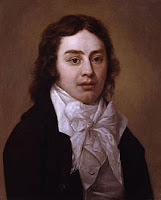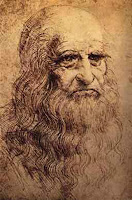கட்டற்ற கலைக்களஞ்சியமான விக்கிப்பீடியாவில் இருந்து.
இலக்கணத்தில் பெயரடை என்னும் சொல்லின் வாக்கிய அமைப்புக்குரிய முதன்மையான வேலை
பெயர்ச்சொல் அல்லது பிரதிபெயரை மாற்றி பெயர்ச்சொல் அல்லது பிரதிபெயரைக் குறிப்பது பற்றிய மேலும் தகவல்களை அளிப்பது. ஒட்டுமொத்தமாக, பெயரடைகள் ஆங்கிலத்தின் பாரம்பரியமிக்க எட்டு சொல்லிலக்கணக் கூறுகளில் ஒன்றாக உருவெடுக்கிறது, இருந்தாலும் மொழி அறிஞர்கள், இன்று பெயரடைகளாகவும் கருதப்படக்கூடிய டிடர்மினர்கள் போன்ற சொற்களிலிருந்து பெயரடைகளை வேறுபடுத்துகிறார்கள்.
எல்லா
மொழிகளும் பெயரடைகளைக் கொண்டிருப்பதில்லை, ஆனால் பெரும்பாலானவை,
ஆங்கிலம் உட்பட, கொண்டிருக்கிறது. (ஆங்கிலப் பெயரடைகளில், மற்றவையுடன்
பிக்,
ஓல்ட் மற்றும்
டையர்ட் ஆகியவை உள்ளடங்கும்.) அவை அல்லாதவை, அதே சொற்பொருள் செயல்பாட்டினைப் புரிய மற்றொரு சொல்லிலக்கணக் கூறின் சொற்களை, அவ்வப்போது வினைச்சொற்களையும், பயன்படுத்துகின்றன; உதாரணத்திற்கு, ஆங்கிலத்தில் "பிக் ஹவுஸ்" வெளிப்படுத்துவதை, அத்தகைய மொழிகள் "டு பி பிக்" என்னும் பொருள்தரும் ஒரு வினைச் சொல்லைப் பயன்படுத்தும், மேலும் அதை வெளிப்படுத்த "பிக்-பீயிங் ஹவுஸ்" என்னும் கட்டுமான ஒப்புமைச்சொல்லைப் பயன்படுத்தும். பெயரடைகள் இல்லாத மொழிகளிலும் கூட, ஒரு மொழியின் பெயரடை மற்றொரு மொழியின் பெயரடையாக இருக்காது; உதாரணத்திற்கு, ஆங்கிலத்தில் "டு பி ஹங்க்ரி" பயன்படுத்தும் வேளையில் (இங்கு
ஹங்க்ரி ஒரு பெயரடை), ஃப்ரெஞ்சு "avoir faim" பயன்படுத்துகிறது, (உள்ளவாறு மொழிபெயர்த்தால் "டு ஹாவ் ஹங்கர்"), எங்கெல்லாம் ஹீப்ரூ "זקוק" (
ஸகுக், தோராயமாக "இன் நீட் ஆஃப்"), என்ற பெயரடையைப் பயன்படுத்துகிறதோ அங்கு ஆங்கிலம் "டு நீட்" என்னும் வினைச்சொல்லைப் பயன்படுத்துகிறது.
பெயரடைகள் உடைய பெரும்பாலான மொழிகளில், அவை ஒரு திறந்த வகையான சொற்களை உருவாக்குகின்றன; அதாவது, புதிய பெயரடைகள்,
சொற்பிறப்பியல் போன்ற செயல்முறைகள் மூலம் உருவாக்கப்படுவது ஒப்பீட்டளவில் சாதாரணமானதுதான்.
பெயரடைகள் மற்றும் வினையடைகள்[தொகு]
ஆங்கிலம் உட்பட, பல மொழிகள், பெயர்ச்சொற்கள் மற்றும் பிரதிபெயர்களை மாற்றியமைக்கும் பெயரடைகள், மற்றும் வினைச் சொற்கள், பெயரடைகள் மற்றும் இதர வினையடைகளை மாற்றியமைக்கும் வினையடைகளுக்கிடையில் வேறுபடுத்திக்காட்டுகிறது. எல்லா மொழிகளும் இதே வேறுபாட்டினைக் கொண்டிருப்பதில்லை, எனினும், பல மொழிகளில் (ஆங்கிலம் உட்பட்) இருவகையாகவும் செயல்படக்கூடிய சொற்கள் இருக்கின்றன. உதாரணத்திற்கு, ஆங்கிலத்தில் "எ ஃபாஸ்ட் கார்" என்னும் சொல்லில் ஃபாஸ்ட் என்பது ஒரு பெயரடை (இங்கு இது பெயர்ச்சொல்லான கார் என்னும் சொல்லை மாற்றியமைக்கிறது), ஆனால் "ஹீ ட்ரோவ் ஃபாஸ்ட்" என்பதில் அது வினையடையாகிறது (இங்கு இது வினைச்சொல்லான ட்ரோவ் -ஐ மாற்றியமைக்கிறது).






















